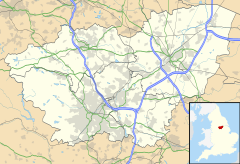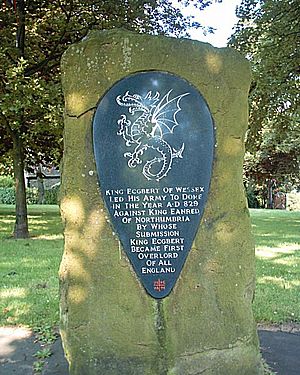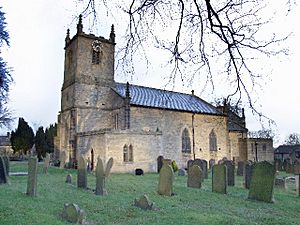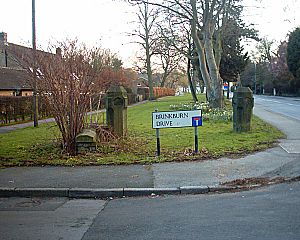Dore facts for kids
Quick facts for kids Dore |
|
|---|---|
| Population | 5,496 |
| OS grid reference | SK311812 |
| Metropolitan borough | |
| Metropolitan county | |
| Region | |
| Country | England |
| Sovereign state | United Kingdom |
| Post town | SHEFFIELD |
| Postcode district | S17 |
| Dialling code | 0114 |
| Police | South Yorkshire |
| Fire | South Yorkshire |
| Ambulance | Yorkshire |
| EU Parliament | Yorkshire and the Humber |
| UK Parliament |
|
Dore is a large village in South Yorkshire, England. It sits on a hill above the River Sheaf. This river actually gave the city of Sheffield its name! Until 1934, Dore was part of Derbyshire, but now it's a neighbourhood of Sheffield.
You can get to Dore by train at Dore and Totley railway station. This station is on the Hope Valley Line, which connects Sheffield and Manchester. There's a really long railway tunnel between Dore and Totley. It goes under part of the Pennines mountains towards Hathersage in Derbyshire. This tunnel is the longest main railway tunnel in England, after the Severn Tunnel between England and South Wales. These are the longest main line railway tunnels in all of Great Britain, not counting the London Underground or the Channel Tunnel to France.
Dore is known for being one of Sheffield's wealthiest areas. For a long time, it was the only part of the city that usually voted for a Conservative politician. However, since May 2008, the three local politicians (called councillors) have been from the Liberal Democrats party. The Member of Parliament (MP) for the Sheffield Hallam area, which includes Dore, is Nick Clegg. From 2010 to 2015, he was Britain's deputy prime minister in the government.
Contents
A Look Back in Time: Dore's History
The name Dore comes from an old English word meaning 'gateway' or a pass. This makes sense because the Limb Brook, River Sheaf, and Meers Brook rivers used to mark the border between two ancient kingdoms. These were the Anglo-Saxon kingdoms of Deira (which later became Northumbria) and Mercia.
King Egbert and the Start of England
The oldest written record of Dore is found in the Anglo-Saxon Chronicle. This old book says that in 827 (or possibly 829), King Egbert of Wessex led his army to Dore. Here, King Eanred of Northumbria agreed to accept Egbert as his ruler. This event was very important because it meant Egbert became the overlord of all of Anglo-Saxon Britain.
Many people believe that King Egbert became the first true king of all England right here in Dore. To remember this big moment, the Dore Village Society put up a special plaque on the village green in 1968.
Dore's Growth and Buildings
The Old School building in Dore was built in 1821. It was put on the same spot where an even older school used to be. The right side of the building was actually where the teacher lived! When a new school opened in Dore, the Old School was fixed up and now serves as a community centre for everyone to use.
Christ Church Dore was built in 1829. Dore became its own separate church area (parish) in 1844. For a long time, Dore stayed a small village. In the 1800s, only about 500 people lived there. It wasn't until 1933 that Dore officially became part of Sheffield.
In the 1600s, a paper mill was built on Avenue Farm. Later, in 1839, a man named Joshua Tyzack changed the building into a place where scythes (a type of farming tool) were made. In 1881, he built a large house next to the forge as a country getaway. You can still see his initials above the front door of that house. In 1932, Dore's local council built a memorial to remember the people who died in the First World War.
Brinkburn Grange: A Grand Old House
Brinkburn Grange was a large house built in 1883 by Thomas B. Matthews. The land it was built on used to be part of Bradway Mill. Matthews was in charge of a company called Turton Brothers & Matthews, which made steel, files, and springs in Sheffield. The old mill pond was turned into a beautiful lake for the Grange. Sadly, Brinkburn Grange was taken down in 1938.





